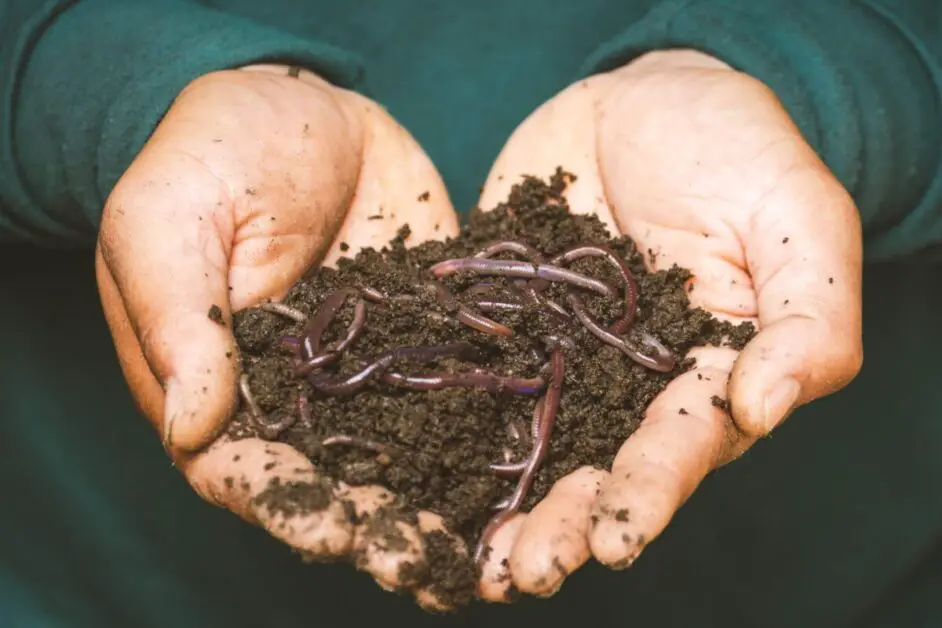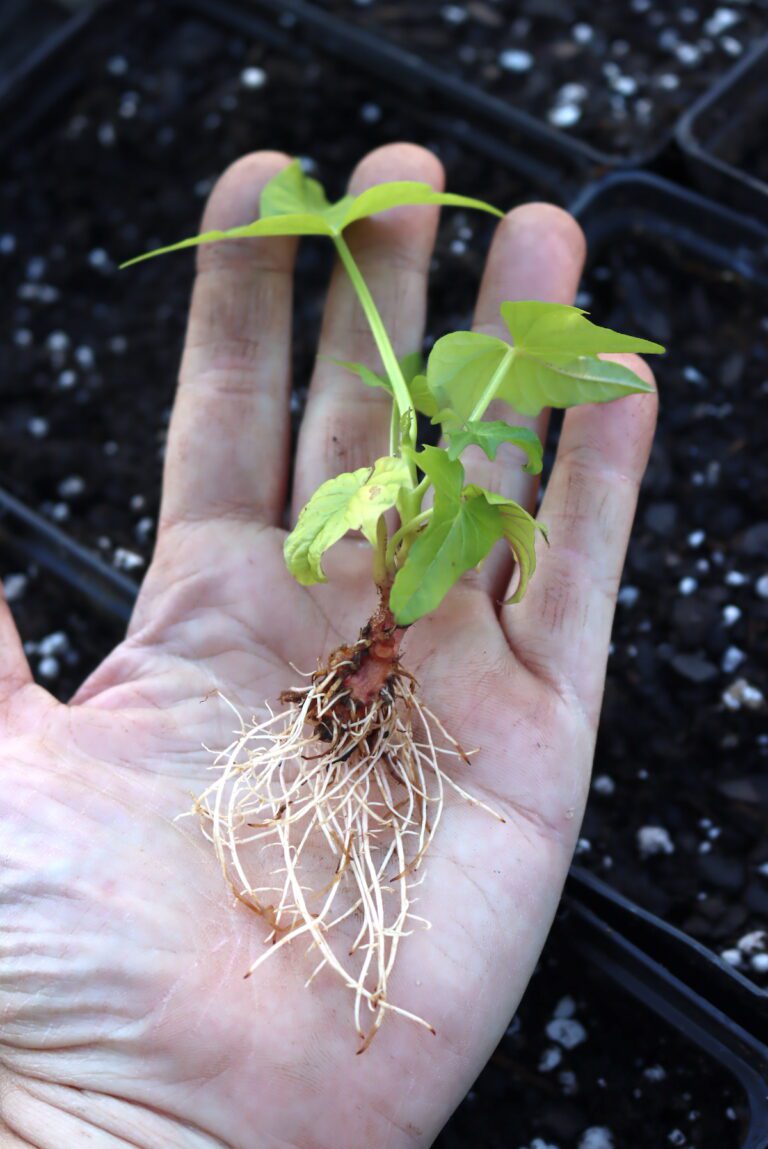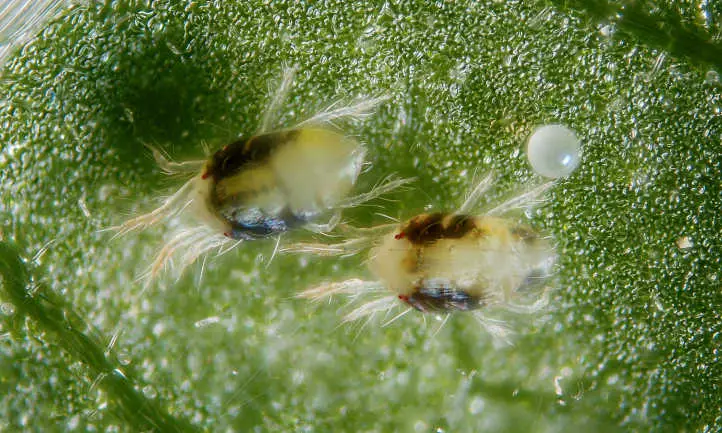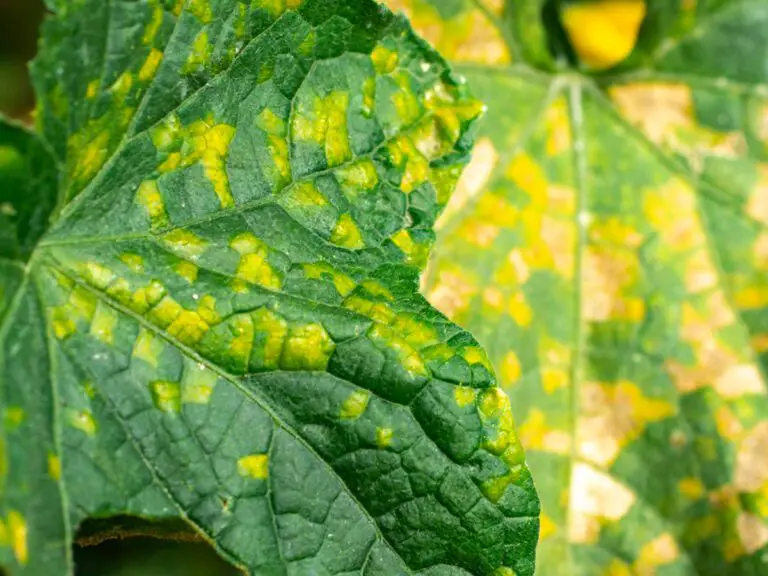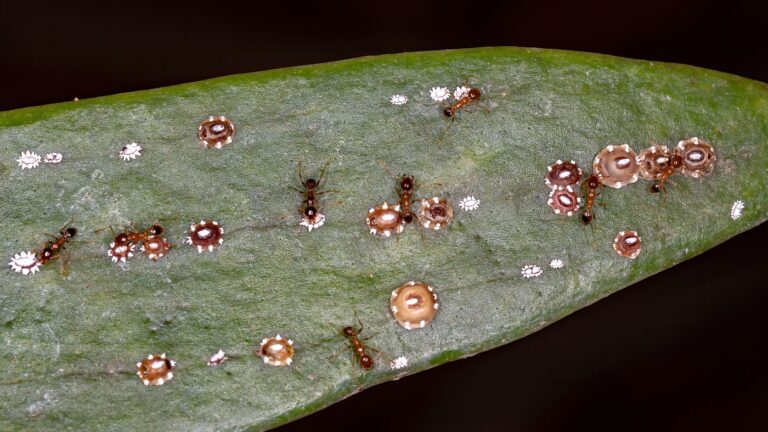Beneficial Nematodes: Nature’s Pest Control
What are Beneficial Nematodes?
Beneficial nematodes, also known as entomopathogenic nematodes, are microscopic roundworms that play a crucial role in biological pest control. These nematodes are considered beneficial because they target and kill a wide range of insect pests that can harm plants and crops. They are a natural and environmentally friendly solution for controlling pests without the use of harmful chemicals.
When applied to the soil, beneficial nematodes actively seek out insect hosts, such as grubs, caterpillars, and beetle larvae. They enter the bodies of these pests and release bacteria that quickly multiply, causing a fatal infection. As the nematodes feed on the bacteria-infested insects, they reproduce and continue their search for new hosts, effectively reducing pest populations in the process.
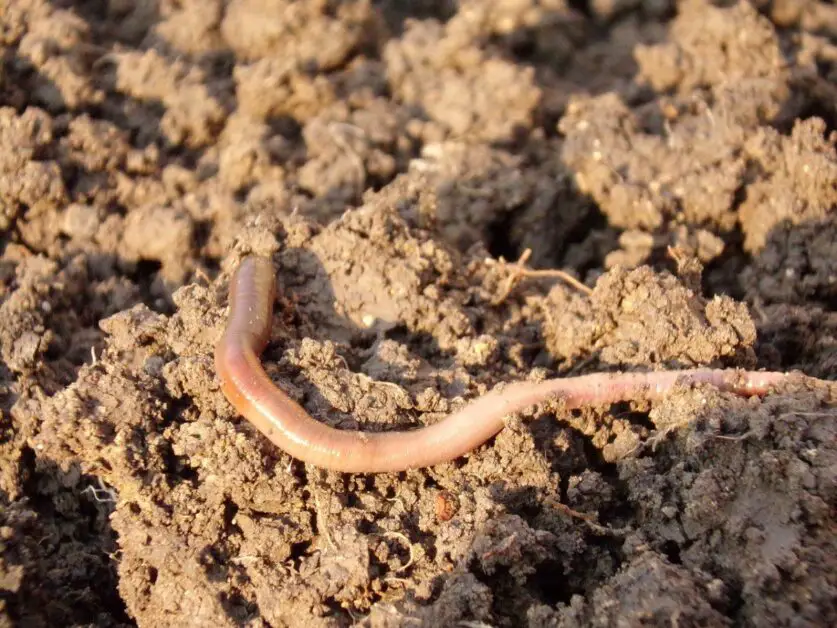
These beneficial organisms are highly effective against a variety of pests, including but not limited to root weevils, cutworms, fungus gnats, and Colorado potato beetles. Their ability to kill pests in their early stages of development makes them particularly valuable in preventing damage to plants and crops. Moreover, beneficial nematodes have a short lifecycle, which allows for multiple generations to occur within a single growing season, providing ongoing pest control.
How do Beneficial Nematodes work as Pest Control?
Beneficial nematodes are microscopic roundworms that provide an effective and environmentally-friendly solution for pest control in gardens and agricultural settings. These nematodes work by seeking out and infecting the larvae, pupae, and other life stages of various pests, including fleas, grubs, caterpillars, weevils, and more.
Once applied to the soil, beneficial nematodes actively search for their target pests. They enter the body of the pest through natural openings or actively penetrate the cuticle. Once inside, the nematodes release bacteria that kill the pest by inducing blood poisoning and tissue degradation. The nematodes then feed on the decomposing pest, reproducing and continuing the cycle of control.
The effectiveness of beneficial nematodes as pest control depends on various factors such as temperature, soil moisture, and the presence of pests. For optimal results, it is crucial to apply the nematodes at the right time and under appropriate conditions. Additionally, certain nematode species target specific pests, so it’s essential to choose the right type of beneficial nematode for the pest problem you’re facing. By employing beneficial nematodes in your pest management strategy, you can naturally and effectively combat pests while minimizing the use of harmful chemicals.
Different Types of Beneficial Nematodes for Pest Control
Beneficial nematodes are a proven and effective solution for controlling pest infestations in gardens and lawns. These microscopic organisms are natural predators that specifically target and attack harmful insects, making them an environmentally friendly alternative to chemical pesticides. When it comes to pest control, there are several different types of beneficial nematodes available on the market.
One of the most common types is Steinernema carpocapsae, which is known for its ability to combat a wide range of insects, including fleas, grubs, weevils, and cutworms. This nematode species actively seeks out its prey, enters their body cavities, and releases bacteria that quickly kill the host. Another popular nematode species is Heterorhabditis bacteriophora, which specializes in controlling soil-dwelling insects like caterpillars, beetles, and termites. These nematodes are adept at locating their victims, infecting them with symbiotic bacteria, and ultimately causing their demise.
Here is a tabel that shows some different types of nematodes that can be used control pests in garden:
| Beneficial Nematode | Scientific Name | Target Pests | Description |
|---|---|---|---|
| Steinernema feltiae | Steinernema feltiae | Fungus gnats, thrips, | Effective against soil-dwelling pests and some above-ground pests. Tolerant of a wide temperature range. |
| caterpillars, beetle grubs | |||
| Steinernema carpocapsae | Steinernema carpocapsae | Flea larvae, weevils, | Adaptable to different soil types and environmental conditions. Effective against various insect larvae. |
| cutworms, borers | |||
| Heterorhabditis bacteriophora | Heterorhabditis bacteriophora | Japanese beetles, | Thrives in moist soil conditions. Particularly effective against grubs and larvae of beetles and weevils. |
| root weevils, grubs | |||
| Steinernema kraussei | Steinernema kraussei | Caterpillars, root weevils, | Native to Europe, effective against various insect larvae and soil pests. |
| black vine weevil |
Benefits of Using Beneficial Nematodes for Pest Control
The use of beneficial nematodes for pest control offers several key benefits that make it a popular choice for gardeners and farmers. One of the main advantages is its effectiveness in targeting a wide range of pests. Beneficial nematodes have been proven to control various types of soil-dwelling insects, including grubs, weevils, beetles, fleas, and many more. This comprehensive coverage ensures that different pest problems can be addressed with a single treatment, simplifying pest management efforts.
In addition to their versatility, beneficial nematodes are also eco-friendly and safe to use in organic gardening. Unlike chemical pesticides, which can be harmful to beneficial insects and pollinators, nematodes specifically target harmful pests while leaving beneficial organisms unharmed. This natural approach helps preserve the delicate balance of the ecosystem and promotes a healthy and sustainable gardening environment. Furthermore, beneficial nematodes do not leave any toxic residues on plants or in the soil, making them an excellent choice for those seeking environmentally friendly pest control solutions.
How to Identify Pest Problems that can be Treated with Beneficial Nematodes
Identifying pest problems in your garden can be crucial in determining whether beneficial nematodes can be effective in controlling these pests. Beneficial nematodes are most commonly used to combat soil-dwelling pests, particularly those that have a larval or pupal stage in the soil. Examples of such pests include various species of beetle larvae, fungus gnats, weevils, and root maggots.
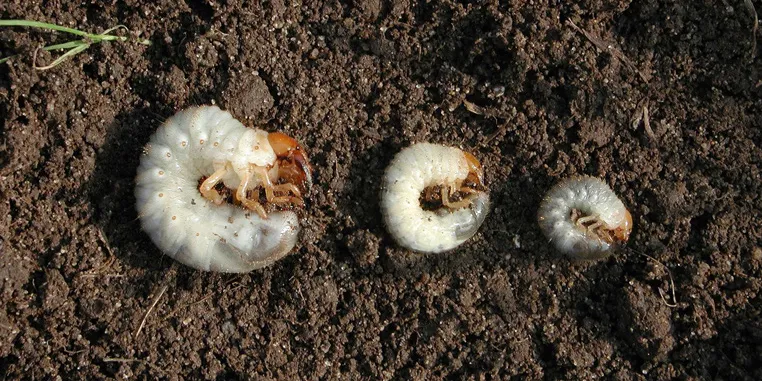
To identify if your garden has pest problems suitable for beneficial nematode treatment, start by closely observing your plants for signs of damage. Wilting, yellowing or stunted growth, holes in leaves, and visible pests on the plants are all common indications of pest infestation. Additionally, inspect the soil around your plants for any signs of larval or pupal pests, such as white, worm-like creatures or damage to the roots.
It’s important to note that beneficial nematodes are not effective against all pests. They primarily target soil-dwelling pests, and their effectiveness varies depending on the specific pest species and the nematode species being used. Therefore, it’s crucial to correctly identify the pest problem to determine if beneficial nematodes are a suitable solution for your garden.
When and Where to Apply Beneficial Nematodes for Pest Control
Beneficial nematodes are effective natural predators that can be used to control a wide range of garden pests. Their application should be timed based on the life cycle of the target pest. For best results, it is recommended to apply beneficial nematodes when the soil temperature is consistently between 50°F and 90°F (10°C and 32°C). This is typically during the spring and fall seasons when pest populations are most active.
When it comes to the specific areas of application, it is important to target the areas where the pest population is concentrated. Beneficial nematodes can be applied to gardens, lawns, flower beds, and even potted plants. They can be used in both outdoor and indoor settings, making them versatile for pest control in various environments.
Prior to application, make sure to thoroughly water the target area, as the nematodes need a moist environment to survive and move through the soil. Avoid applying the nematodes during hot and sunny periods, as the intense heat can reduce their effectiveness. It’s also crucial to follow the instructions provided by the nematode supplier, as different species may have specific requirements regarding their application and dosage.
Factors to Consider Before Using Beneficial Nematodes for Pest Control
Factors to Consider Before Using Beneficial Nematodes for Pest Control
Before using beneficial nematodes for pest control, there are several factors that gardening enthusiasts should take into consideration. First and foremost, it is important to properly identify the specific pest problem in your garden. Beneficial nematodes are effective against a wide range of soil-dwelling pests, including grubs, beetles, weevils, and fungus gnats. However, they may not be as effective against above-ground pests like aphids or caterpillars.
Another important factor to consider is the temperature and moisture conditions in your garden. Beneficial nematodes are most effective when the soil temperature is between 55 and 90 degrees Fahrenheit, with optimal activity occurring at around 70 degrees. Additionally, nematodes require a moist environment to survive and move through the soil. If the soil in your garden is excessively dry or waterlogged, it may not be suitable for nematode application.
Furthermore, it is crucial to select the appropriate type of beneficial nematode for your pest problem. There are different species of nematodes that target specific pests, so it is important to choose the right nematode species for effective pest control. Consulting with a local extension office or gardening expert can provide valuable guidance in choosing the correct nematode species for your specific situation. Additionally, it is important to follow the instructions on the nematode packaging regarding application rates and methods to ensure optimal results.
The table below shows the factors that needs to be considered while using beneicila nematodes:
| Factors to Consider | Description |
|---|---|
| Pest Identification | Identify specific pests in your garden. Nematodes target soil-dwelling pests like grubs, beetles, weevils, and fungus gnats, but may not work on above-ground pests like aphids or caterpillars. |
| Temperature and Moisture Conditions | Nematodes are effective between 55-90°F in moist soil. Dry or waterlogged soil may hinder their effectiveness. |
| Selection of Nematode Species | Choose nematode species targeting your pest. Consulting experts can help select the right type. |
| Application Instructions | Follow packaging instructions for application rates and methods to ensure nematodes effectively target pests and establish in the soil. |
By carefully considering these factors before using beneficial nematodes for pest control, gardening enthusiasts can maximize the effectiveness of this natural and eco-friendly pest management approach. With the right nematode species, suitable environmental conditions, and proper pest identification, beneficial nematodes can be a valuable tool in maintaining a healthy and thriving garden.
How to Prepare Your Garden for Beneficial Nematode Application
Preparing your garden for beneficial nematode application is an important step in ensuring their effectiveness in controlling pests. Proper preparation will create a favorable environment for the nematodes to thrive and target the pests in your garden. Here are a few tips to help you prepare your garden for beneficial nematode application.
Firstly, it is essential to remove any debris or weeds from your garden. This will provide a clean and open space for the nematodes to move freely and encounter the pests. Be sure to clear out any dead plant material, as it can serve as a breeding ground for harmful pathogens.
Next, consider improving the moisture levels in your soil. Beneficial nematodes require a moist environment to survive and actively search for their prey. Water your garden thoroughly a day or two before applying the nematodes, ensuring that the soil is adequately moist but not waterlogged.
Furthermore, it is beneficial to loosen the soil in your garden. Aerating the soil helps to break up compaction and allows for better movement of nematodes through the soil. You can achieve this by using a garden fork or a tiller to gently work the soil, creating channels for the nematodes to navigate.
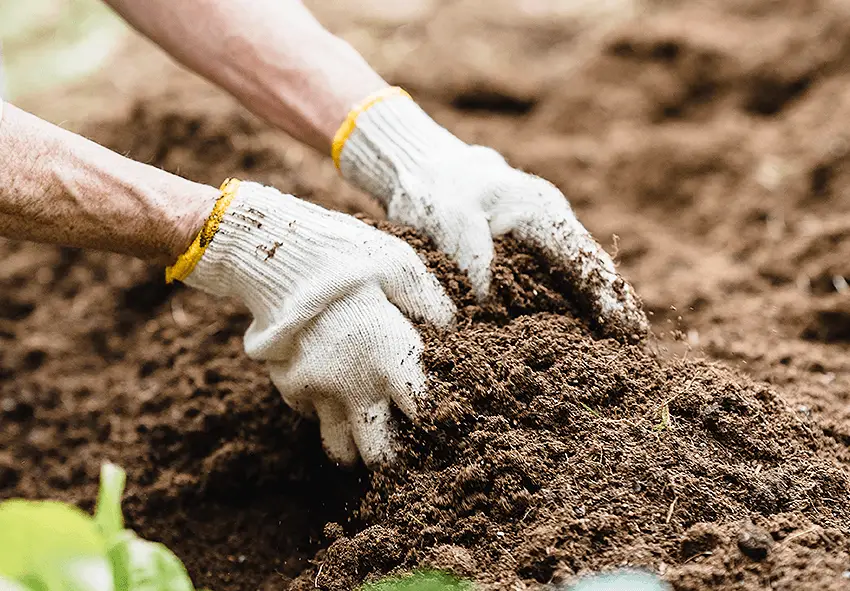
Lastly, it is recommended to avoid using chemical or synthetic pesticides in your garden before and after applying beneficial nematodes. These chemicals can harm the nematodes and negate their pest control effectiveness. Opt for organic and natural pest control methods to maintain a healthy balance in your garden ecosystem.
Taking the time to prepare your garden for beneficial nematode application will greatly enhance their ability to combat pests effectively. By providing a clean, moist, and aerated environment, you can ensure that these microscopic allies have the best chance of success in controlling pests in your garden.
Methods of Applying Beneficial Nematodes for Pest Control
One of the most common methods of applying beneficial nematodes for pest control is through irrigation or watering systems. This involves mixing the nematodes with water and then applying them to the soil using a sprayer or a hose with a nozzle attachment. It is important to ensure that the nematodes are evenly distributed throughout the soil to maximize their effectiveness. This method is particularly suitable for larger areas or gardens with an existing irrigation system in place.
Another method of applying beneficial nematodes is by direct application to the soil surface. In this method, the nematodes are simply sprinkled or spread onto the soil using a handheld spreader or by broadcasting them by hand. It is important to ensure that the nematodes are evenly distributed and not clumped together. This method is particularly suitable for smaller areas or potted plants where irrigation systems may not be present.
Regardless of the method chosen, it is crucial to follow the instructions provided by the nematode supplier for the specific nematode species being used. This includes factors such as the recommended application rate, timing, and environmental conditions to ensure optimal pest control results. By employing these methods, gardeners can effectively harness the power of beneficial nematodes to combat pests and protect their plants naturally and environmentally-friendly manner.
Tips for Maximizing the Effectiveness of Beneficial Nematodes
To maximize the effectiveness of beneficial nematodes in pest control, there are several tips you can follow. Firstly, ensure that you properly store and handle the nematodes. Beneficial nematodes are living organisms that can be sensitive to temperature and light. It is important to keep them refrigerated until you are ready to use them, and avoid exposing them to direct sunlight.
Another tip is to apply beneficial nematodes at the right time. Nematodes are most effective when the pests they target are in their vulnerable stages. This means that timing is crucial. Make sure to monitor your garden regularly and identify when pest populations are at their peak. This will help you determine the best time to introduce the nematodes for maximum impact.
Additionally, consider the application method for beneficial nematodes. Different nematode species may require different application techniques. Some nematodes require the use of water for application, while others may be applied with the help of a sprayer or spreader. Follow the instructions provided by the manufacturer to ensure that the nematodes are applied correctly and evenly throughout your garden.
Lastly, remember to create favorable conditions for beneficial nematodes. Nematodes thrive in moist environments, so ensure that your garden soil is adequately watered before and after nematode application. This will help support their survival and activity.
By following these tips, you can maximize the effectiveness of beneficial nematodes as a natural and eco-friendly pest control method in your garden.
Common Mistakes to Avoid when Using Beneficial Nematodes for Pest Control
When using beneficial nematodes for pest control, there are several common mistakes that should be avoided to ensure their effectiveness. One mistake is applying nematodes at the wrong time of day. Beneficial nematodes are sensitive to sunlight and should be applied during the early morning or late evening when temperatures are cooler and the sun is less intense. Applying nematodes during the heat of the day can cause them to become stressed and less effective in controlling pests.
Another mistake to avoid is using the wrong application method. Beneficial nematodes are typically applied through a sprayer or irrigation system to ensure even distribution throughout the soil. Using methods such as spreading or hand-watering may result in patchy coverage and reduce the overall effectiveness of nematodes as a pest control method. It is important to carefully follow the instructions provided with the nematodes to ensure proper application and maximize their pest control capabilities.
By avoiding these common mistakes, gardeners can maximize the effectiveness of beneficial nematodes as a natural and environmentally-friendly pest control solution. Proper application techniques, timing, and adherence to instructions will help ensure that nematodes are able to effectively target and control pests, leading to healthier plants and a more productive garden.
• Applying nematodes at the wrong time of day can reduce their effectiveness
• Beneficial nematodes should be applied during the early morning or late evening when temperatures are cooler and the sun is less intense
• Nematodes can become stressed and less effective if applied during the heat of the day
• Using the wrong application method can result in patchy coverage and reduce overall effectiveness
• Beneficial nematodes are typically applied through a sprayer or irrigation system for even distribution throughout the soil
• Spreading or hand-watering may not provide adequate coverage for effective pest control
• Following instructions provided with nematodes is crucial for proper application and maximizing their pest control capabilities
• Avoiding common mistakes will maximize the effectiveness of beneficial nematodes as a natural and environmentally-friendly pest control solution
• Proper application techniques, timing, and adherence to instructions will lead to healthier plants and a more productive garden.
How Long Does it Take for Beneficial Nematodes to Control Pests?
Beneficial nematodes are effective natural pest control agents that can help eliminate various garden pests. However, the time it takes for them to control pests can vary depending on several factors.
Firstly, the type of pest being targeted plays a significant role in the effectiveness and duration of nematode control. Some pests, such as fungus gnats or thrips, can be controlled relatively quickly within a few days to a couple of weeks. On the other hand, certain pests like grubs or vine weevils may take several weeks or even months to be fully eradicated.
Secondly, environmental conditions also impact the speed of nematode control. Optimal temperature and moisture levels are crucial for nematode activity and reproduction. Warmer temperatures typically facilitate faster nematode growth and reproduction, leading to quicker pest control. Additionally, maintaining adequate soil moisture helps nematodes move efficiently and target pests effectively.
Overall, while the exact time frame for beneficial nematodes to control pests may vary, their effectiveness is well-documented. Incorporating these natural predators into your pest management strategy can significantly reduce pest populations and help maintain a healthy and thriving garden environment.
How to Store and Handle Beneficial Nematodes Properly
When it comes to storing and handling beneficial nematodes, proper care and attention are essential to ensure their effectiveness. Beneficial nematodes are living organisms, so it’s crucial to handle them with care to maintain their viability.
First and foremost, it’s important to store beneficial nematodes in a cool environment. Ideally, they should be kept between 35°F and 50°F (2°C and 10°C). This temperature range helps to keep them dormant and extends their shelf life. Avoid exposing them to extreme temperatures, such as freezing or high heat, as it can damage or kill the nematodes.
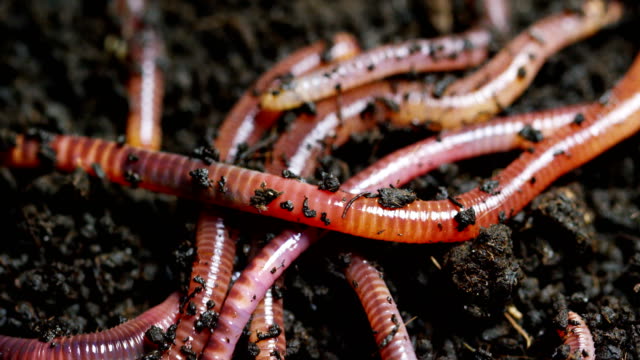
It’s also important to check the expiration date on the package before using or storing beneficial nematodes. Nematodes have a limited lifespan, so using them past their expiration date may result in reduced effectiveness. Always purchase nematodes from reputable suppliers to ensure their quality and viability.
When handling beneficial nematodes, be gentle and avoid excessive agitation. Shake the container lightly to ensure an even distribution, but avoid vigorous shaking or stirring, as it may harm the nematodes. It’s also a good idea to mix the nematodes in water according to the package instructions before applying them to the desired area.
By following these guidelines for proper storage and handling, you can maximize the effectiveness of beneficial nematodes as a natural pest control solution in your garden or landscape.
Are Beneficial Nematodes Harmful to Humans or Pets?
Beneficial nematodes are widely regarded as safe and environmentally friendly pest control options, posing no significant harm to humans or pets when used correctly. These microscopic organisms specifically target and parasitize pest insects, effectively reducing their populations without causing any harm to non-target species.
The beneficial nematodes used in pest control are specialized and highly selective in their host choice. They preferentially go after pests such as grubs, caterpillars, flea larvae, and other soil-dwelling insects, which are common garden and lawn pests. In fact, many gardeners and pet owners appreciate the use of beneficial nematodes as a natural alternative to chemical pesticides, avoiding potential health risks and environmental damage associated with traditional pest control methods.
It is important to note that while beneficial nematodes are generally considered safe, it is crucial to follow the application instructions provided by the manufacturer. Applying too many nematodes or using them in inappropriate conditions can reduce their effectiveness or cause negative effects. As with any pest control solution, it is also advisable to keep pets and children away from treated areas until the nematodes have had a chance to do their work and dissipate naturally. By following the recommended guidelines, you can confidently use beneficial nematodes as a safe and effective pest control method.
Can Beneficial Nematodes be Used in Organic Gardening?
Beneficial nematodes are not only safe, but they are also an ideal choice for organic gardening. These microscopic worms are natural predators of many common garden pests, making them a valuable tool for controlling infestations without the use of harmful chemicals. Organic gardeners can use beneficial nematodes to target a wide range of pests, including grubs, caterpillars, beetles, and fungus gnats.
One of the main advantages of using beneficial nematodes in organic gardening is that they are highly effective at targeting specific pests while leaving beneficial insects unharmed. Unlike chemical pesticides, which can have broad-spectrum effects and harm bees, butterflies, and other beneficial pollinators, nematodes are selective in their prey. They actively seek out and infect specific pest larvae, effectively controlling their populations without disrupting the ecosystems of your garden. Additionally, beneficial nematodes are safe for humans, pets, and the environment, making them an eco-friendly solution for organic gardeners.
Watch the video to learn more about beneficial nematodes.
Success Stories and Testimonials of Using Beneficial Nematodes for Pest Control
Success Stories and Testimonials of Using Beneficial Nematodes for Pest Control
Many gardeners and farmers have attested to the effectiveness of beneficial nematodes as a natural and sustainable method of pest control. One success story comes from John Thompson, a farmer in California, who had been battling a severe infestation of root-knot nematodes in his tomato crop. Despite trying various chemical treatments, the nematodes persisted and caused significant damage. However, upon applying beneficial nematodes to his soil, Thompson noticed a remarkable improvement. The nematodes colonized the roots of the tomato plants, targeting and eliminating the harmful nematodes and preventing further damage. As a result, Thompson experienced a significant increase in crop yield and quality, leading him to incorporate beneficial nematodes into his pest control strategy for other crops as well.
Another testimony of the effectiveness of beneficial nematodes comes from Susan Johnson, an avid gardener in Texas. Susan had been struggling with a stubborn infestation of flea beetles in her vegetable garden. These beetles were causing severe damage to her plants and threatening her harvest. Frustrated with the lack of success from chemical treatment options, Susan decided to give beneficial nematodes a try. After applying the nematodes to the soil, she noticed a significant reduction in flea beetle population within a few weeks. Her plants started thriving, free from the feeding damage caused by the pests. Impressed with the results, Susan now relies on beneficial nematodes as her go-to pest control method in her garden.
These success stories highlight the potential of beneficial nematodes as an effective and sustainable solution for pest control. By harnessing the natural predatory abilities of these microscopic organisms, gardeners and farmers can reduce reliance on chemical pesticides and preserve the health of the ecosystem. However, it is important to note that while beneficial nematodes have shown promising results in controlling specific pest populations, their effectiveness may vary depending on the target pest species, environmental conditions, and application methods. Therefore, it is crucial for individuals to identify the specific pest problems they are facing and consult with experts or extension services to determine the most suitable nematode species and application strategy for their particular situation.
Are beneficial nematodes harmful to plants?
No, beneficial nematodes are not harmful to plants. They specifically target and control pests without causing any harm to the plants themselves.
Can beneficial nematodes be used indoors?
Beneficial nematodes are primarily used for outdoor pest control. However, there are certain species that can be used indoors, such as the Steinernema feltiae, which is effective against fungus gnats and other soil-dwelling pests.
Can beneficial nematodes control all types of pests?
Beneficial nematodes are most effective against soil-dwelling pests, such as grubs, Japanese beetles, and root weevils. They may not be as effective against pests that primarily reside above ground, like aphids or caterpillars.
How often do I need to apply beneficial nematodes?
The frequency of beneficial nematode application depends on the specific pest problem and the nematode species being used. It is best to follow the instructions provided by the manufacturer for optimal control.
Can beneficial nematodes survive in extreme temperatures?
Beneficial nematodes have specific temperature ranges in which they can survive and remain effective. It is important to consider the temperature requirements of the nematode species being used and apply them accordingly.
Are beneficial nematodes safe for beneficial insects?
Beneficial nematodes are generally safe for beneficial insects, as they specifically target pests and do not harm beneficial insects. However, it is always recommended to use caution and avoid spraying beneficial insects directly with nematodes.
Do beneficial nematodes have any negative effects on the environment?
Beneficial nematodes are considered environmentally friendly and do not have any negative effects on the environment when used properly. They are a natural and sustainable pest control solution.
Can beneficial nematodes be used in conjunction with chemical pesticides?
It is generally not recommended to use beneficial nematodes in conjunction with chemical pesticides, as the pesticides may harm or kill the nematodes. It is best to choose one pest control method and follow the instructions accordingly.
How long do beneficial nematodes remain active in the soil?
The longevity of beneficial nematodes in the soil depends on various factors, including environmental conditions and the specific nematode species. On average, they can remain active and effective for a few weeks to a few months.
Can beneficial nematodes be used in hydroponic systems?
Beneficial nematodes are typically not used in hydroponic systems, as these systems do not contain soil where the nematodes can thrive. They are primarily used in traditional soil-based gardening.

